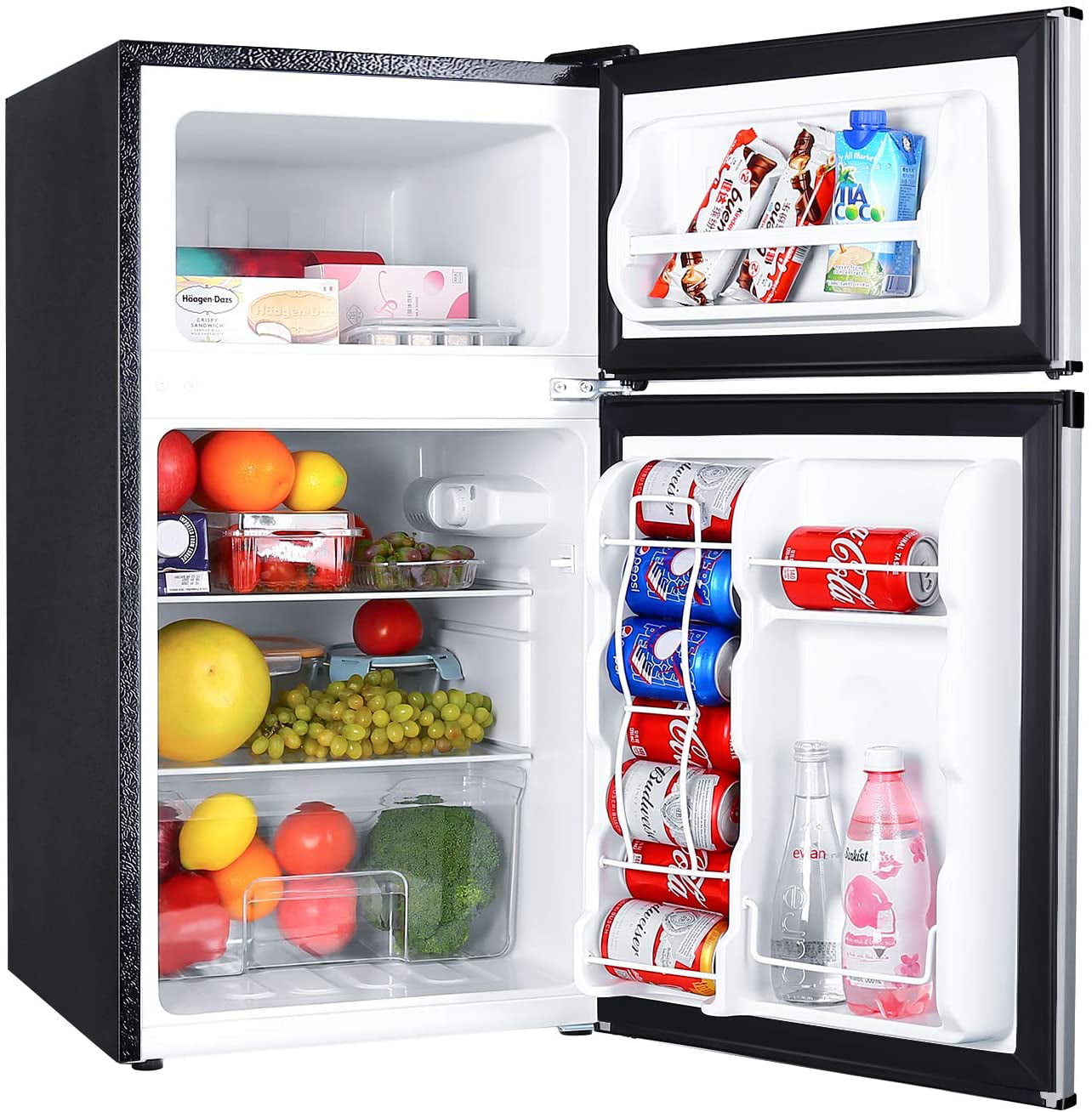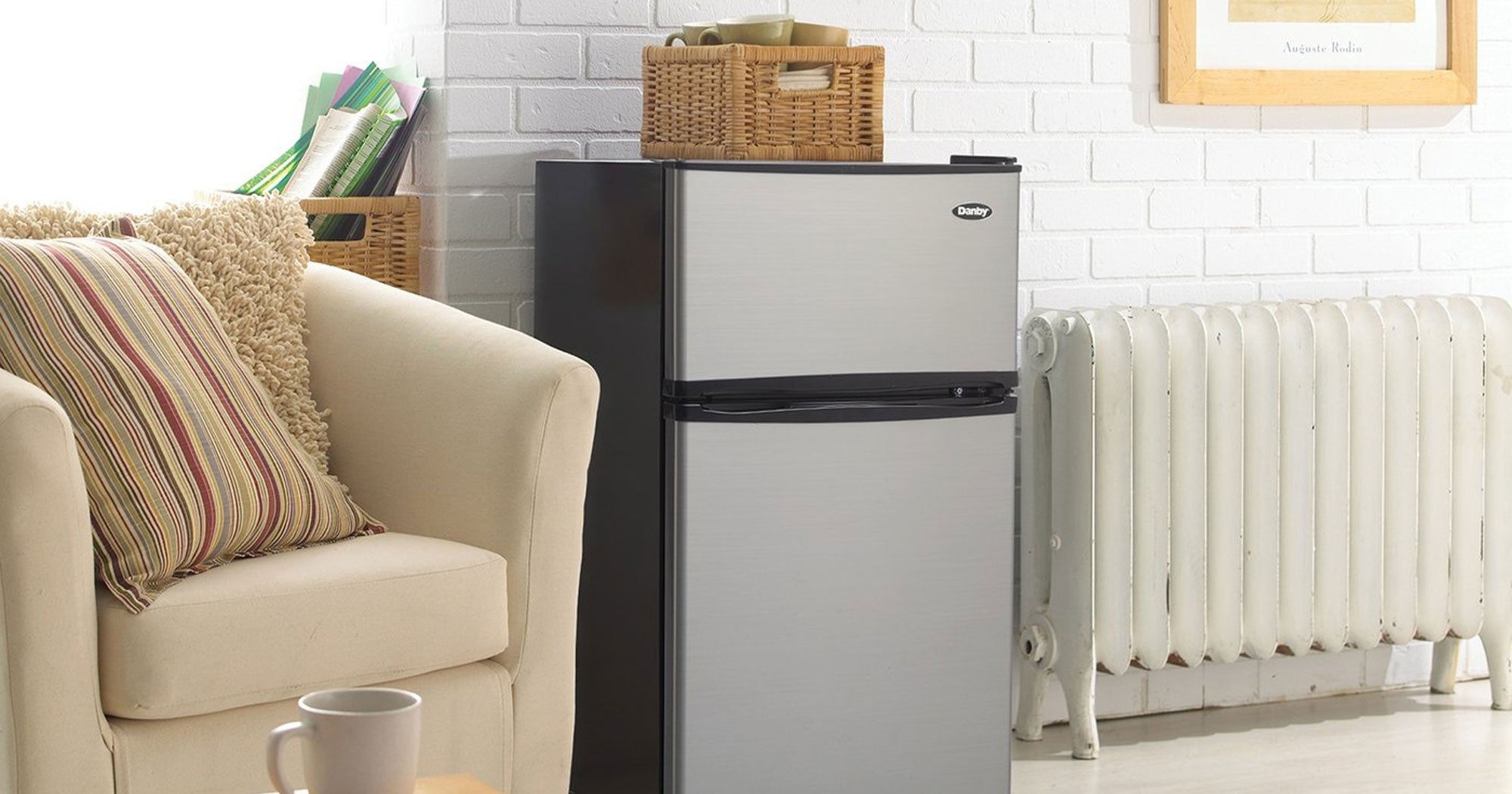
The short answer is yes, you can add Freon to a mini fridge, but it is not a simple or recommended DIY project. You will need special tools, skills, and safety precautions to do it correctly. In some cases, it might be cheaper and easier to buy a new mini fridge instead of repairing the old one.
In this post, we will explain how refrigerant works in a mini fridge, how to tell if your mini fridge needs more refrigerant, and how to add refrigerant to a mini fridge safely and effectively.
Refrigerant is a gas that changes into a liquid and back into a gas as it moves through the cooling system of the fridge. The cooling system consists of four main parts: the compressor, the condenser, the expansion valve, and the evaporator.
The compressor is the part that pumps the refrigerant through the system. It compresses the refrigerant gas into a high-pressure and high-temperature state. The compressed refrigerant then flows to the condenser, which is a coil of metal tubing located at the back or bottom of the fridge. The condenser releases heat to the surrounding air and cools down the refrigerant into a liquid form.
The liquid refrigerant then passes through the expansion valve, which is a small opening that reduces the pressure and temperature of the refrigerant. The expansion valve also controls how much refrigerant enters the evaporator, which is another coil of metal tubing located inside the fridge. The evaporator absorbs heat from the air and items inside the fridge and turns the refrigerant back into a gas. The gas then returns to the compressor and the cycle repeats.
The amount of refrigerant in the system is carefully measured and sealed by the manufacturer. If there is too much or too little refrigerant, the cooling performance and efficiency of the fridge will be affected. That’s why adding refrigerant to a mini fridge is not a simple task that anyone can do.

There are some signs that can indicate that your mini fridge is low on refrigerant. These include:
However, these signs can also be caused by other problems, such as dirty coils, faulty thermostat, blocked vents, or electrical issues. Therefore, before you assume that your mini fridge needs more refrigerant, you should check for these other possible causes and fix them if needed.
If you are not sure what is wrong with your mini fridge, you should consult a professional technician who can diagnose and repair it for you. They will have the proper tools and equipment to test the refrigerant level and pressure in your mini fridge and add more refrigerant if necessary.

If you are confident that your mini fridge needs more refrigerant and you want to do it yourself, you will need some tools and materials, such as:
You will also need to follow these steps:

Q: Is Freon bad for the environment?
A: Freon is a trade name for a group of refrigerants that contain chlorine and fluorine. Some of these refrigerants, such as R12 and R22, are known to deplete the ozone layer and contribute to global warming. They are being phased out and replaced by more environmentally friendly alternatives, such as R134a and R600a. However, even these refrigerants have some negative effects on the environment and should be handled with care.
Q: How often do I need to add refrigerant to my mini fridge?
A: Ideally, you should never need to add refrigerant to your mini fridge, as it is a closed system that does not lose or consume refrigerant over time. However, if there is a leak or damage in the cooling system, you may need to add more refrigerant to restore the cooling performance. You should check for leaks regularly and fix them as soon as possible.
Q: Can I use any type of refrigerant for my mini fridge?
A: No, you should only use the type of refrigerant that is compatible with your mini fridge model and cooling system. Using the wrong type of refrigerant can cause serious damage to your mini fridge and pose a fire or explosion risk. You can find out what type of refrigerant your mini fridge uses by checking the label on the back or inside of your mini fridge or by consulting the user manual.
Adding refrigerant to a mini fridge is not a simple or recommended DIY project. It requires special tools, skills, and safety precautions to do it correctly. It can also be costly and risky if done incorrectly. Therefore, unless you are absolutely sure that your mini fridge needs more refrigerant and you know how to do it properly, you should leave this task to a professional technician who can do it safely and effectively.
We hope this post has helped you understand how refrigerant works in a mini fridge, how to tell if your mini fridge needs more refrigerant, and how to add refrigerant to a mini fridge if necessary. If you have any questions or comments, please feel free to share them below.
